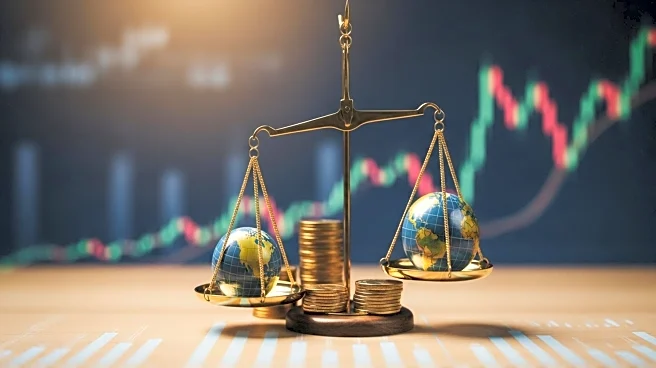What's Happening?
Federal Reserve Bank of New York President John Williams has expressed support for the recent interest rate cut, citing emerging weaknesses in the labor market as a key factor. During a public appearance in Rochester, New York, Williams explained that the decision to lower rates was aimed at reducing economic restrictiveness to maintain job market health while managing inflation. The Federal Open Market Committee recently reduced the overnight target rate range by a quarter percentage point to between 4% and 4.25%. Williams emphasized the need to balance inflation control with job market strength, noting that while inflationary pressures have lessened, the Fed still aims to achieve its 2% inflation goal without harming employment.
Why It's Important?
The Federal Reserve's decision to cut interest rates reflects its dual mandate to manage inflation and maximize employment. By easing monetary policy, the Fed aims to support job creation amid signs of labor market softening. This move could have significant implications for U.S. economic growth, potentially boosting consumer spending and business investment. However, it also raises concerns about the Fed's ability to control inflation if economic conditions change. Stakeholders such as businesses and consumers may benefit from lower borrowing costs, but the long-term impact on inflation and economic stability remains uncertain.
What's Next?
The Federal Reserve will continue to assess economic conditions on a meeting-by-meeting basis, with potential for further rate adjustments depending on labor market and inflation trends. Stakeholders, including businesses and policymakers, will closely monitor the Fed's actions and economic indicators to gauge future monetary policy directions. The Fed's ability to balance its dual mandate will be critical in shaping economic outcomes in the coming months.











